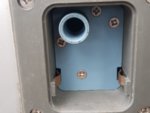sydnsue
Full Member
- Messages
- 373
Further to my previous question concerning the useless Whale water filler, I have decided to install a new water filler point. This will require a new hose to the fresh water tank. How do I connect to the tank? There is no large opening to get a hand inside.
If this is not possible, I will have to insert a Y connector into the existing hose, but this may slow the fill speed (or remove the hose from the Whale and connect it to the new filler).
Also, the water system is a pressurised system. Is the tank also pressurised?
If this is not possible, I will have to insert a Y connector into the existing hose, but this may slow the fill speed (or remove the hose from the Whale and connect it to the new filler).
Also, the water system is a pressurised system. Is the tank also pressurised?
Last edited:





